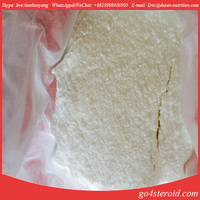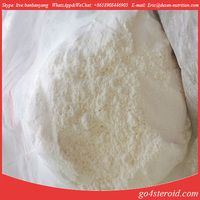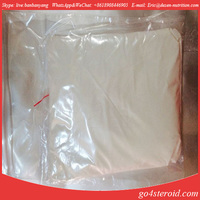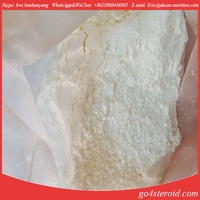L-Cysteine CAS 52-90-4 Food improver
Product Quick Detail
- Place Of Origin
- China
- Minimum Order
- 1
- Packaging
- Exquisite packaging
- Delivery
- 3-7 work days
Specifications
Cysteine (abbreviated as Cys or C) is a semi-essential[4] proteinogenic amino acid with the formula HO2CCH(NH2)CH2SH. It is encoded by the codons UGU and UGC. The thiol side chain in cysteine often participates in enzymatic reactions, as a nucleophile. The thiol is susceptible to oxidization to give the disulfide derivative cystine, which serves an important structural role in many proteins. When used as a food additive, it has the E number E920.
Cysteine has the same structure as serine, but with one of its oxygen atoms replaced by sulfur; replacing it with selenium gives selenocysteine. (Like other natural proteinogenic amino acids cysteine has (L) chirality in the older D/L notation based on homology to D and L glyceraldehyde. In the newer R/S system of designating chirality, based on the atomic numbers of atoms near the asymmetric carbon, cysteine (and selenocysteine) have R chirality, because of the presence of sulfur (resp. selenium) as a second neighbor to the asymmetric carbon. The remaining chiral amino acids, having lighter atoms in that position, have S chirality.)
Dietary sources
Although classified as a non-essential amino acid, in rare cases, cysteine may be essential for infants, the elderly, and individuals with certain metabolic disease or who suffer from malabsorption syndromes. Cysteine can usually be synthesized by the human body under normal physiological conditions if a sufficient quantity of methionine is available. Cysteine is catabolized in the gastrointestinal tract and blood plasma. In contrast, cystine travels safely through the GI tract and blood plasma and is promptly reduced to the two cysteine molecules upon cell entry.
- Country: China (Mainland)
- Business Type: Manufacturer,Trading Company
- Market:Americas,Europe,Oceania
- Founded Year:2010
- Address:
- Contact:ava yang
Other products from Hengyang Desen Manufacturing&Trading co., LTD.
Relate products of L-Cysteine CAS 52-90-4 Food improver
L-Cysteine Product Name: L-Cysteine Synonyms: (R)-2-Amino-3-mercaptopropanoic acid;3-mercapto-l-alanin;alpha-amino-beta-mercaptopropionicacid;alpha-Amino-beta-thiolpropionic acid;alpha-amino-beta-thiolpropionicacid;Cystein;half-cysteine CAS: 52-90-4 MF: C3H7NO2S MW: 121.16 ...












